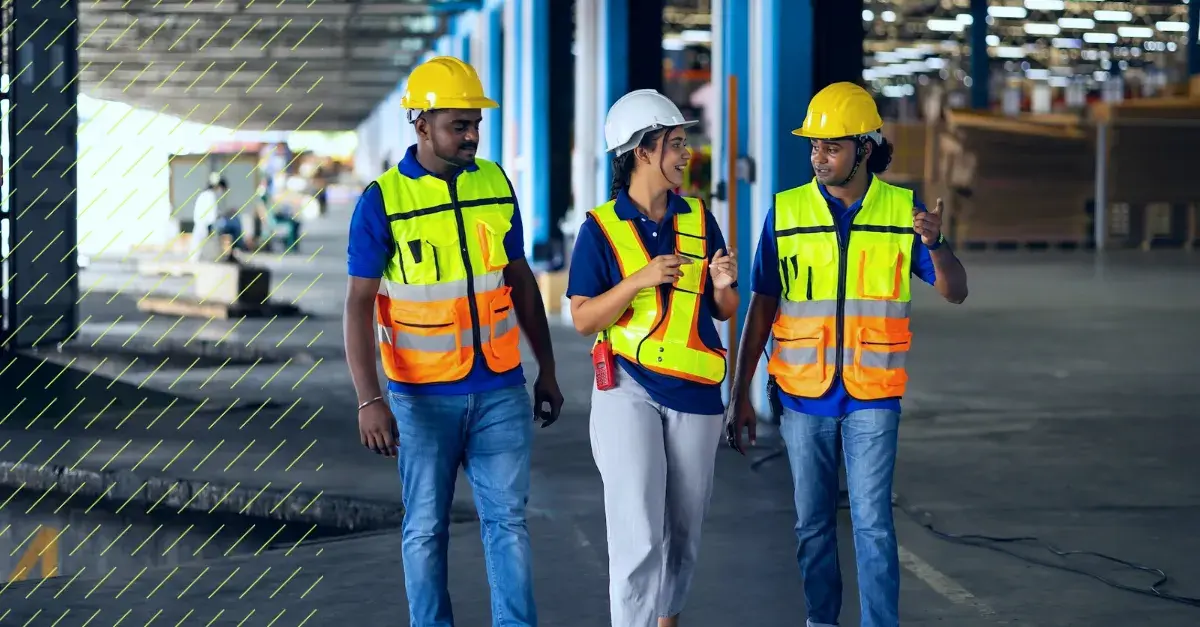![One Point Lessons for Better Frontline Training [Includes Template]](https://www.swipeguide.com/hubfs/SwipeGuide_March2025/Images/one-point-lessons.png)

The Human Side of Manufacturing Technology.
Manufacturing Technology should be human-centric to be successfully implemented and adopted by frontline teams. Get some best practices and tips from HEINEKEN and PepsiCo.
The changing demands of manufacturing technology on the shop floor need to be met by new paradigms of learning and knowledge delivery, and supported by digital tools.
HEINEKEN and PepsiCo are tackling these issues head-on with a range of innovative solutions that focus on the human elements of manufacturing.
Success starts with the people on the shop floor: the machine operators, engineers, and their supervisors who rely on having the right knowledge, day in and day out.
But in order for this to be successful, companies need to also create a culture of learning that celebrates accountability and improvement.

New approach to traditional training.
The performance and behavior that we expect from our teams hasn’t changed. Manufacturers expect operators to be competent and motivated in their daily work, and to embrace a mindset of continuous improvement. But the manufacturing technologies we use on the shop floor, as well as the tools we use to learn, have changed dramatically in the last 20 years. More and more, we’re pressured to do more with less.
Thus, it’s incredibly important that we reexamine the way we deliver traditional learning models in manufacturing. As described by Jose Matias of PepsiCo, it’s looked essentially like this for decades:
- Classroom training. This is the “what.” New recruits learn about processes in a static environment, away from the factory floor and operations.
- Shop floor demonstrations. A few demonstrations in the production environment to familiarize and model proper procedures in a realistic setting.
- Certifications. New employees will then take a number of assessments to gauge the success of the training procedure, and then be placed on the shop floor and left to their own devices.
But is this the best way to enable learning on the shop floor?
Why formal classroom training fails:
- Limited support and follow-up afterward
- Often fails to give people the long-term knowledge retention they need to be successful.
- These methods of learning are simply not engaging or practical enough in today’s factories, or for today’s increasingly tech-savvy manufacturing workforce.
Both PepsiCo and Heineken have looked to new ways to engage the manufacturing workforce while driving efficiency and knowledge retention through innovative digital approaches to on-the-job learning.
Why you should consider digital on-the-job learning:
Here are a few of the key benefits that we discussed in our a webinar with Heineken and PepsiCo.
- The right knowledge at the right moment. Having the right know-how in the moment of need (for example, on a production line on a mobile phone) means the right decisions can always be made about the task at hand. This empowers consistent, quality performance.
- Digital standard work is instant to update, trackable, and easy to share throughout a supply chain. This provides a consistent baseline on which to measure performance.
- Digital work instructions enable faster onboarding through more engaging and more effective on-the-job learning.
- New tools have the features - and unprecedented connectivity - to facilitate collaboration and help democratize knowledge. Involving the frontline in processes and procedures empowers more consistent performance and accountability in daily operations.
- These digital solutions can, and should, be supported by corresponding human solutions. Supervisors can boost the success of digital strategies by modeling behavior through regular, human-focused activities like Gemba Walks.
Digital solutions for modern manufacturing.
We talk a lot about the impact of new tools on training and day-to-day engagement in the manufacturing industry. But what exactly are the new challenges facing manufacturers today? Below, we’ve listed a sample of some of the challenges facing manufacturers today, as identified in our webinar.
- Upscaling for the future. Manufacturing technology is changing rapidly. In order to prepare for new training demands, companies need to anticipate what new skills are needed to get the job done. What new capabilities do they need, and how do they develop these roles for the future?
- The changing role of the specialist. As processes become more complex and more digital, machine specialists must cope with increasing demand across production sites. How do you share this specialized knowledge with colleagues on a global scale?
- A generation gap. Generation Z has a fundamentally different way of learning, working, and approaching knowledge retention. In the world of the smartphone and social media, how do we keep frontline workers both interested and knowledgeable?
- Knowledge availability. What’s needed to accomplish the task at hand, and how do you distribute it? Can manufacturing tech help deliver knowledge in an intelligent and engaging way?
Notice anything similar? The challenges above are all focused on the human workforce. Digital standard work and improved digital work instructions allow manufacturers to adapt and improve existing learning models at scale - in a way that makes sense for the people who actually need to use them. Heineken’s Joris Stolk outlined three key strategies to help tackle these challenges from a human perspective:
- Competency development. Manufacturers are working hard to identify the specific roles for the workforce as we move towards the future factory. This process starts by defining the necessary competencies and then educating the workforce with structured learning paths that adopt a 70-20-10 model. As we discussed above, the majority of learning should take place on the shop floor through autonomous learning tools that promote learning long after a recruit leaves the classroom.
- Knowledge availability. This involves quipping frontline workers with an IoT (Internet of Things) device to communicate relevant knowledge at the moment it’s needed. Think tablets, mobile phones, and smart glasses connected to the Internet. These devices are are embedded with sensors, software, and other technologies that connect and exchange data with other devices and systems.
- Change leadership. Manufacturers can identify the ways that team leads and supervisors can motivate a growth mindset within their production environment. Human-focused strategies can educate people on how to educate themselves while actively rewarding initiative and accountability.
 The 70-20-10 learning model.
The 70-20-10 learning model.
Focus on human-centered culture.
Digital tools need to focus on the humans involved in their operations. They know that as a younger workforce takes the stage, the way they approach learning and reskilling will need to be presented in a way that’s familiar and natural.
But they also know that new tools are only part of the solution. Learning and success in manufacturing depends on a culture that promotes accountability, efficiency, and a deep-seated dedication to quality. Thus, they go to great lengths to ensure that these behaviors are modeled in an honest way from a top-down perspective.

Both PepsiCo and Heineken involve the workforce in key decisions and process improvements to foster both accountability and engagement.
Building a culture of learning on the shop floor means delivering clear expectations from leadership.
Successfully embracing smart manufacturing technology is not just about performance - more knowledge, delivered to the people who need it, means that at the end of the day work is more fun and rewarding.
Learn more about manufacturing technology and human-centered operational excellence:
👉 Webinar: The Human Side of Manufacturing Tech.
👉 Empowering a Culture of Operational Excellence.
👉 Top-Down is Out: Democratize Knowledge with Lean Thinking.
Author
Revisions
It's time to simplify frontline training
Work instructions, checklists, and skills management - all in SwipeGuide
- Cut training time by 50%
- SOC I and II compliant

